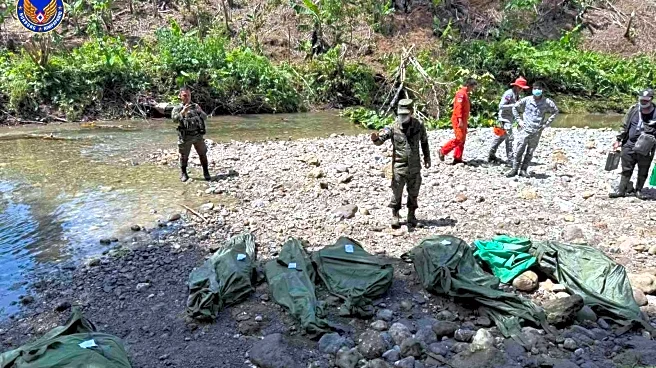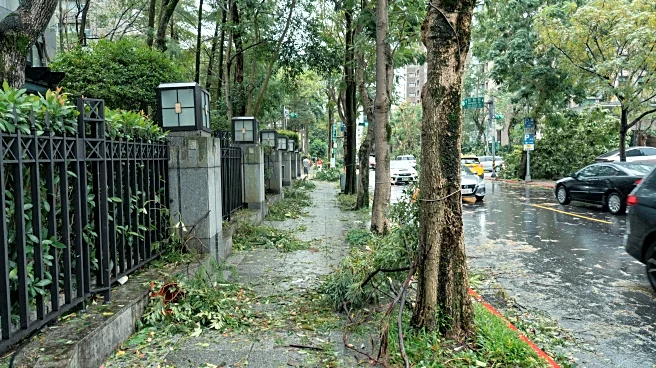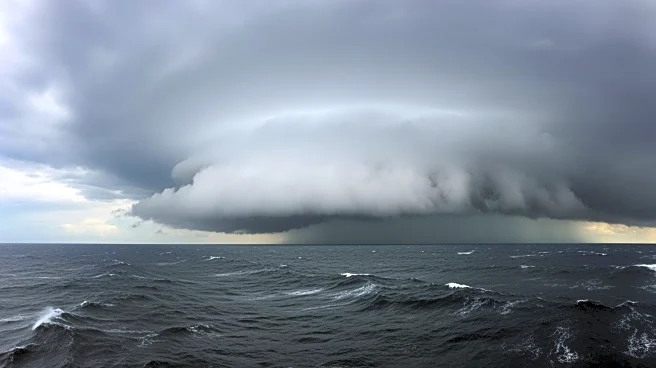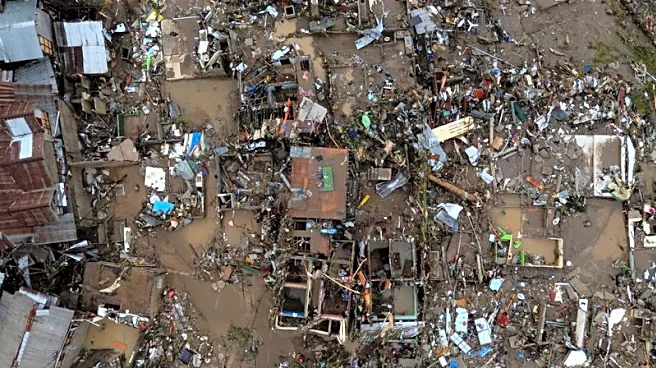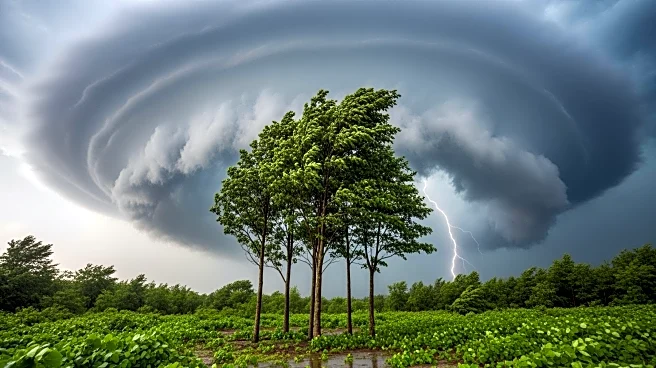What's Happening?
Typhoon Kalmaegi has caused significant destruction in the Philippines, leading to a state of emergency declaration by President Ferdinand Marcos Jr. The typhoon resulted in at least 114 deaths and 127
missing persons, marking it as the deadliest natural disaster in the country this year. The storm displaced over 560,000 villagers, with nearly 450,000 evacuated to emergency shelters. In Vietnam, the typhoon made landfall with fierce winds and torrential rains, causing three fishermen to go missing and prompting the evacuation of over 537,000 people. The storm is expected to bring more than 24 inches of rain to some areas, exacerbating the already severe flooding conditions.
Why It's Important?
The declaration of a state of emergency in the Philippines allows for faster disbursement of emergency funds and measures to prevent food hoarding and overpricing. This response is crucial for the affected regions, which are facing severe humanitarian needs. The typhoon's impact highlights the vulnerability of Southeast Asian countries to extreme weather events, which are becoming more frequent and intense due to climate change. The situation underscores the need for improved disaster preparedness and response strategies in these regions.
What's Next?
Disaster-response officials in the Philippines are warning of another potential tropical cyclone that could strengthen into a super typhoon and impact the northern regions early next week. This looming threat necessitates continued vigilance and preparedness from both government agencies and local communities. In Vietnam, authorities are monitoring the situation closely as floodwaters rise and landslides become more likely, with efforts focused on ensuring the safety and well-being of evacuated residents.
Beyond the Headlines
The recurring natural disasters in Southeast Asia, including typhoons and floods, are a stark reminder of the broader impacts of climate change. These events are not only causing immediate humanitarian crises but also long-term economic and social challenges for affected countries. The increasing frequency and intensity of such disasters call for international cooperation and investment in climate resilience and sustainable development practices.




